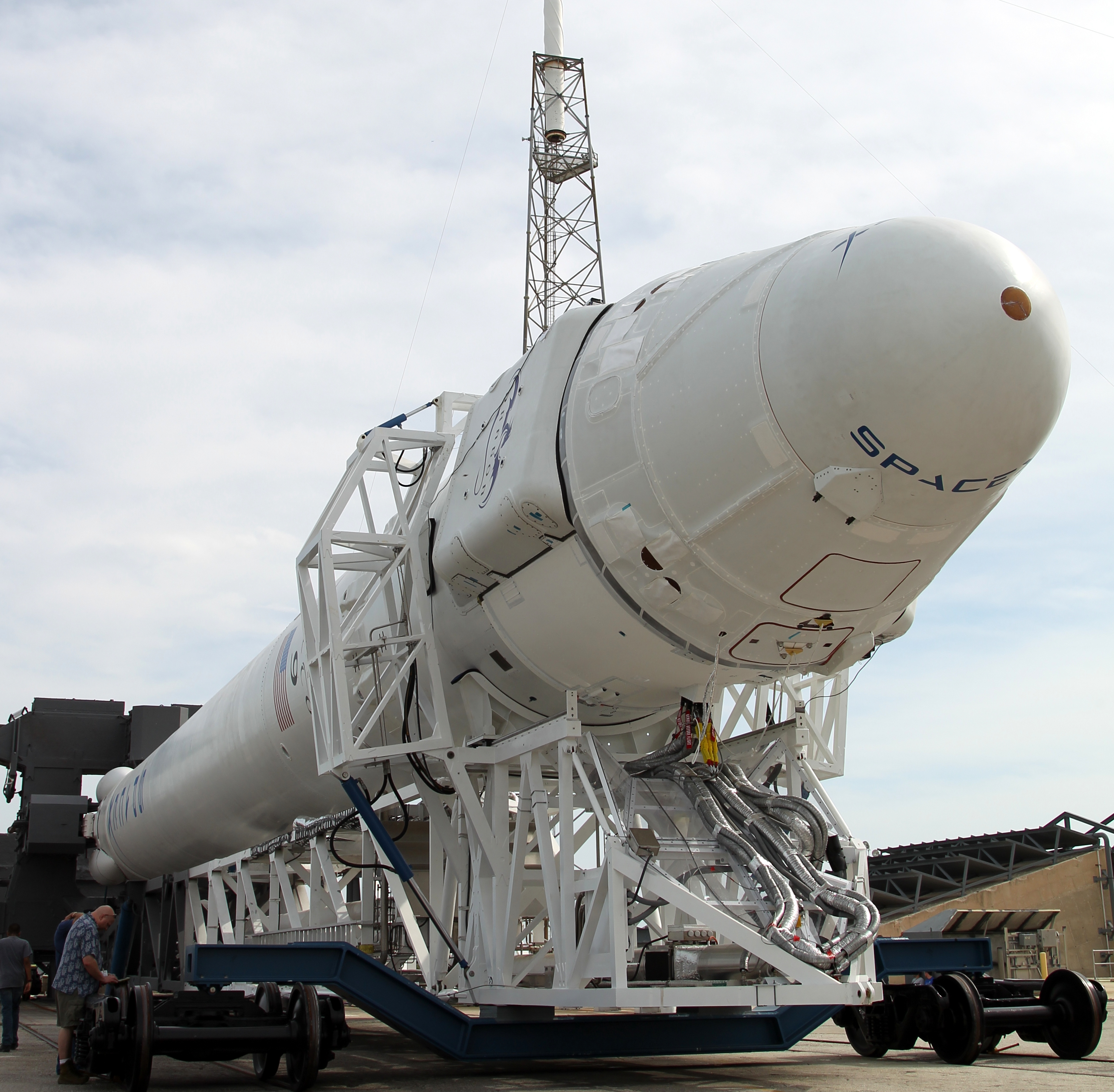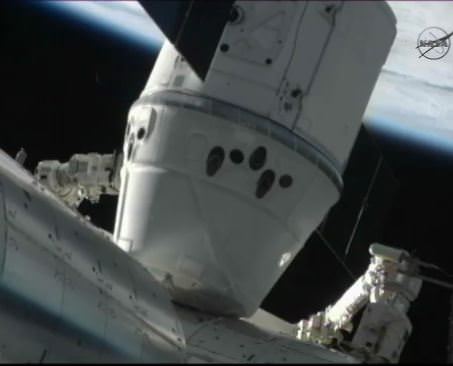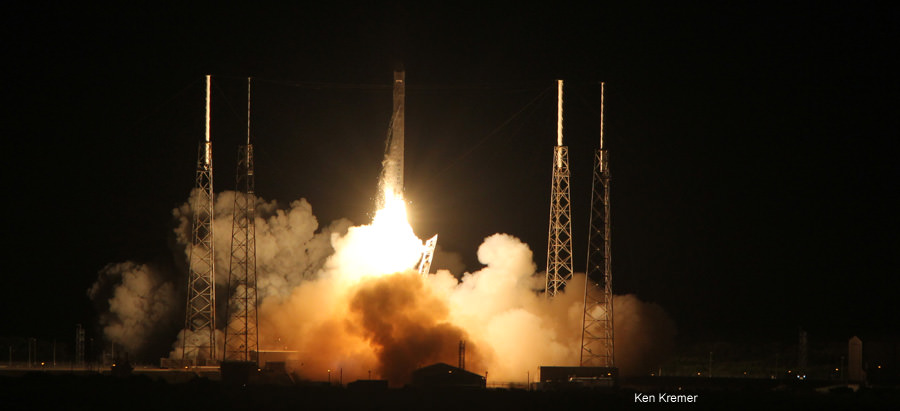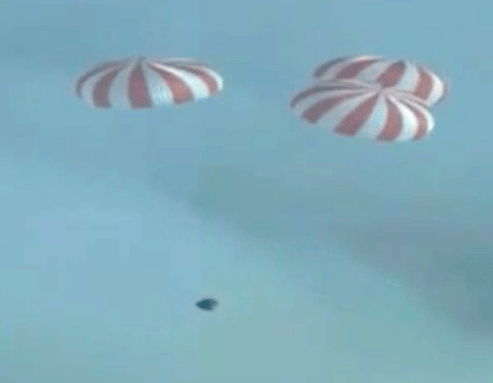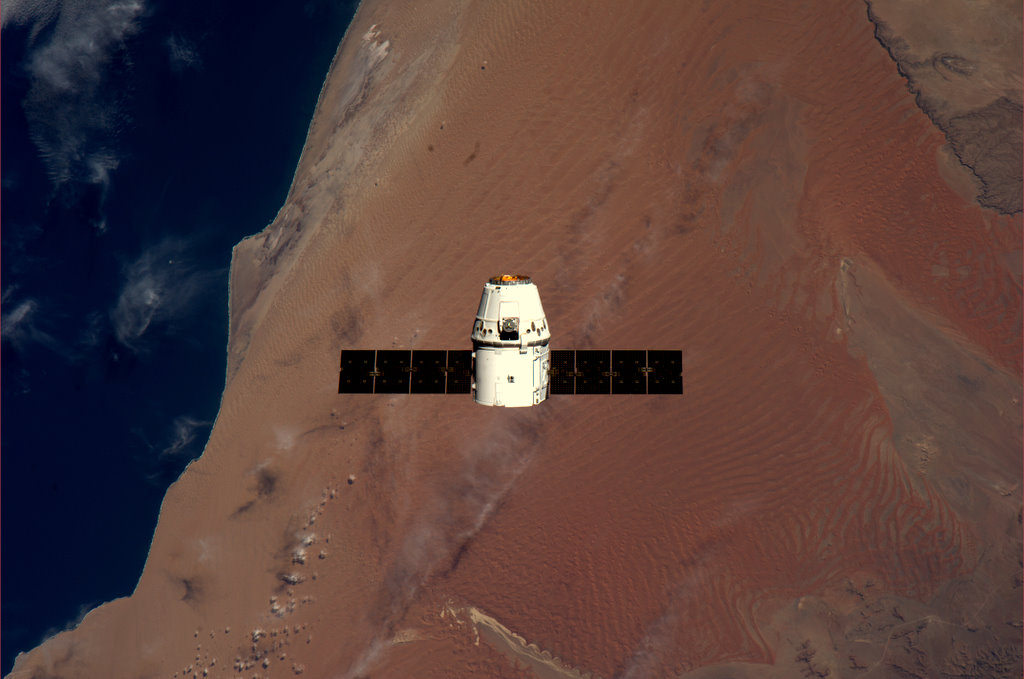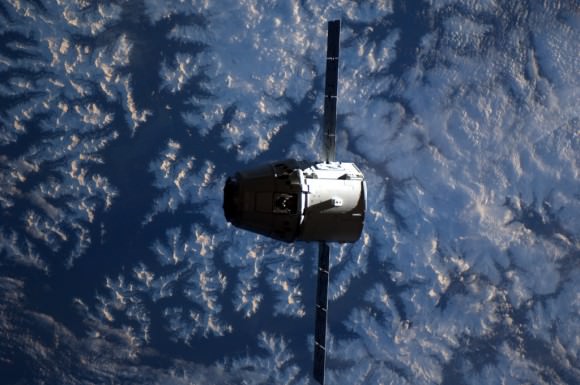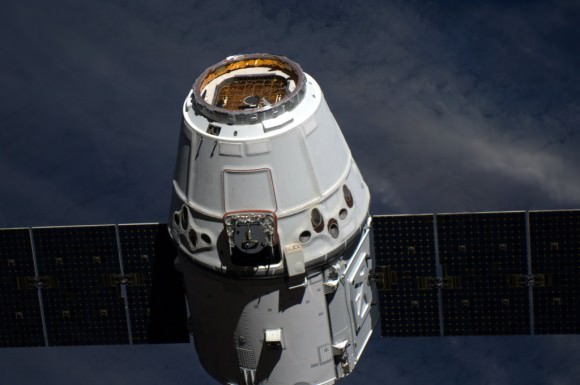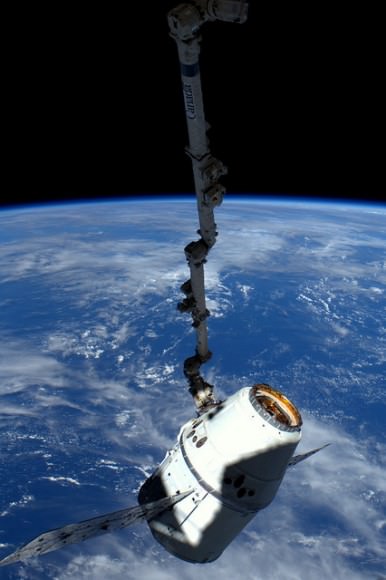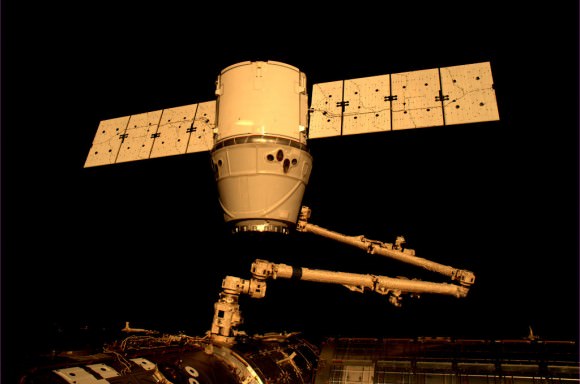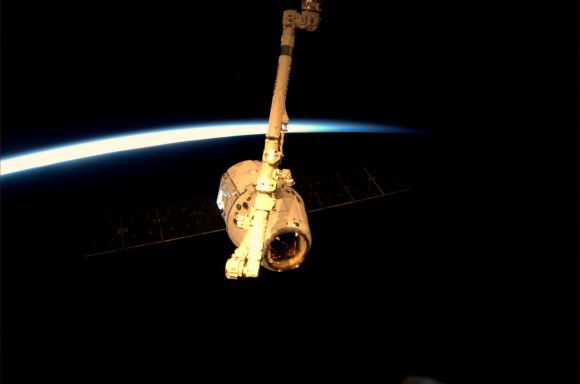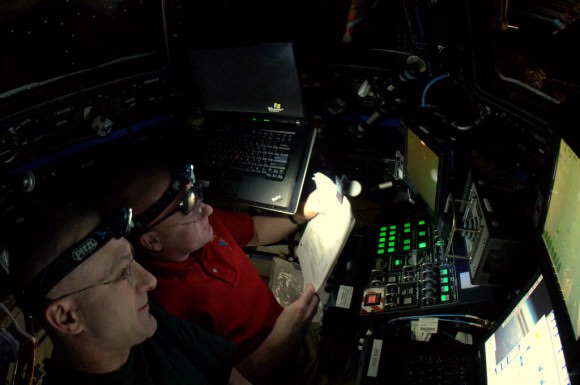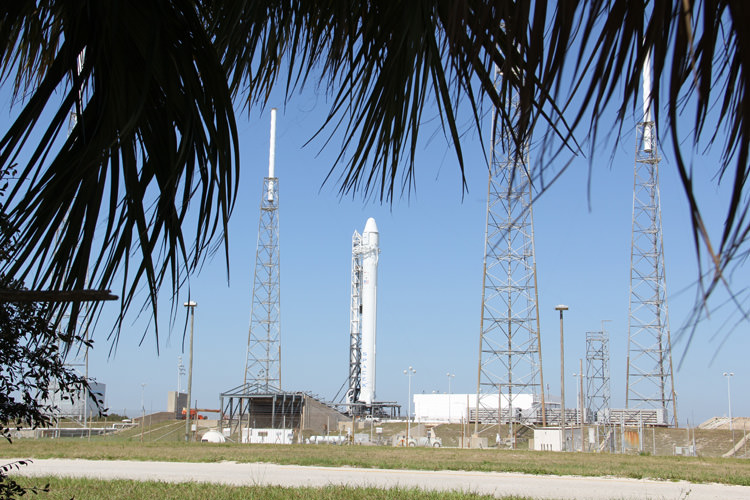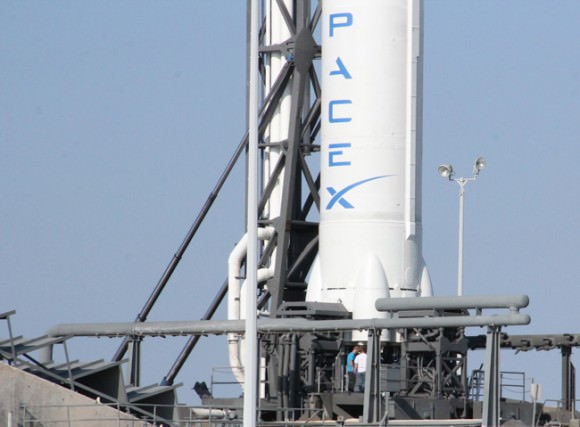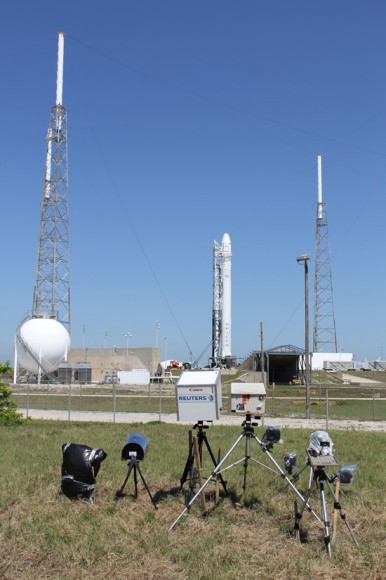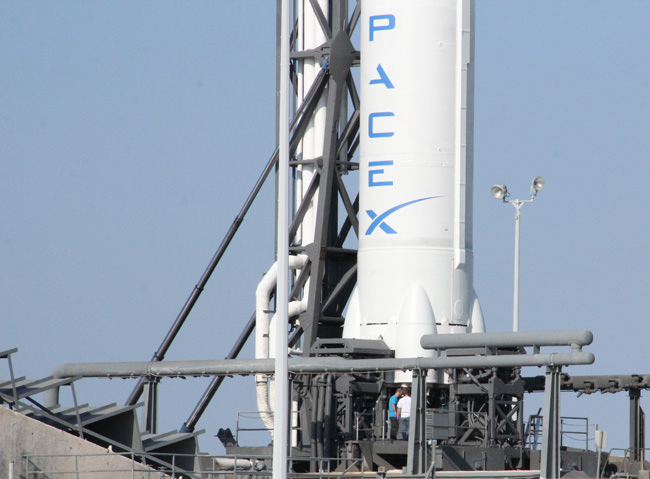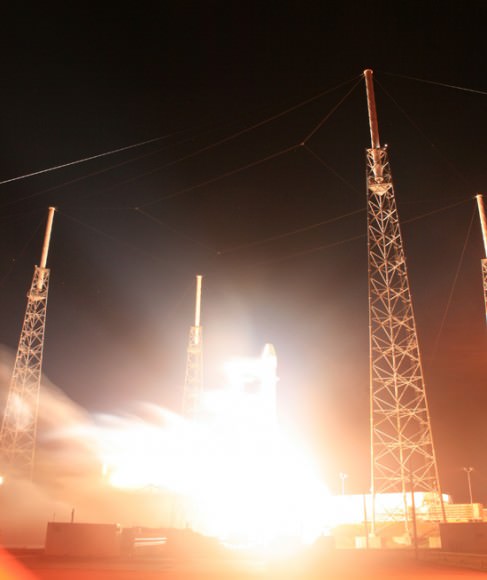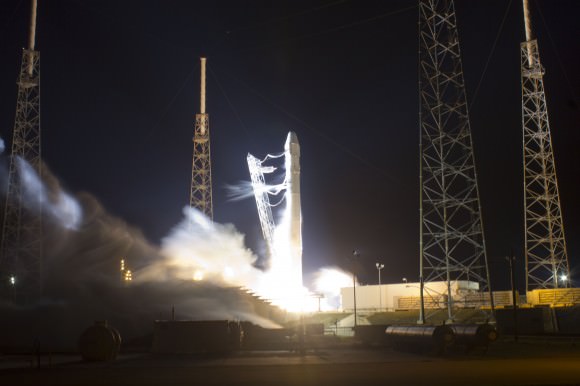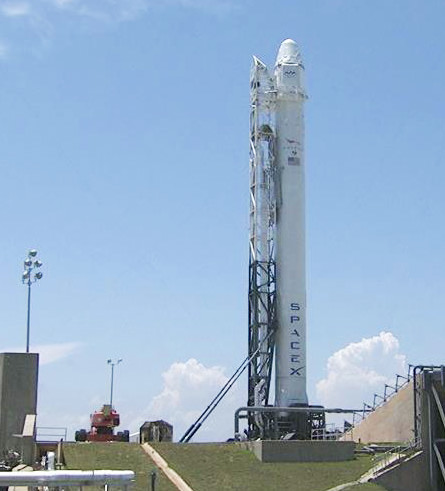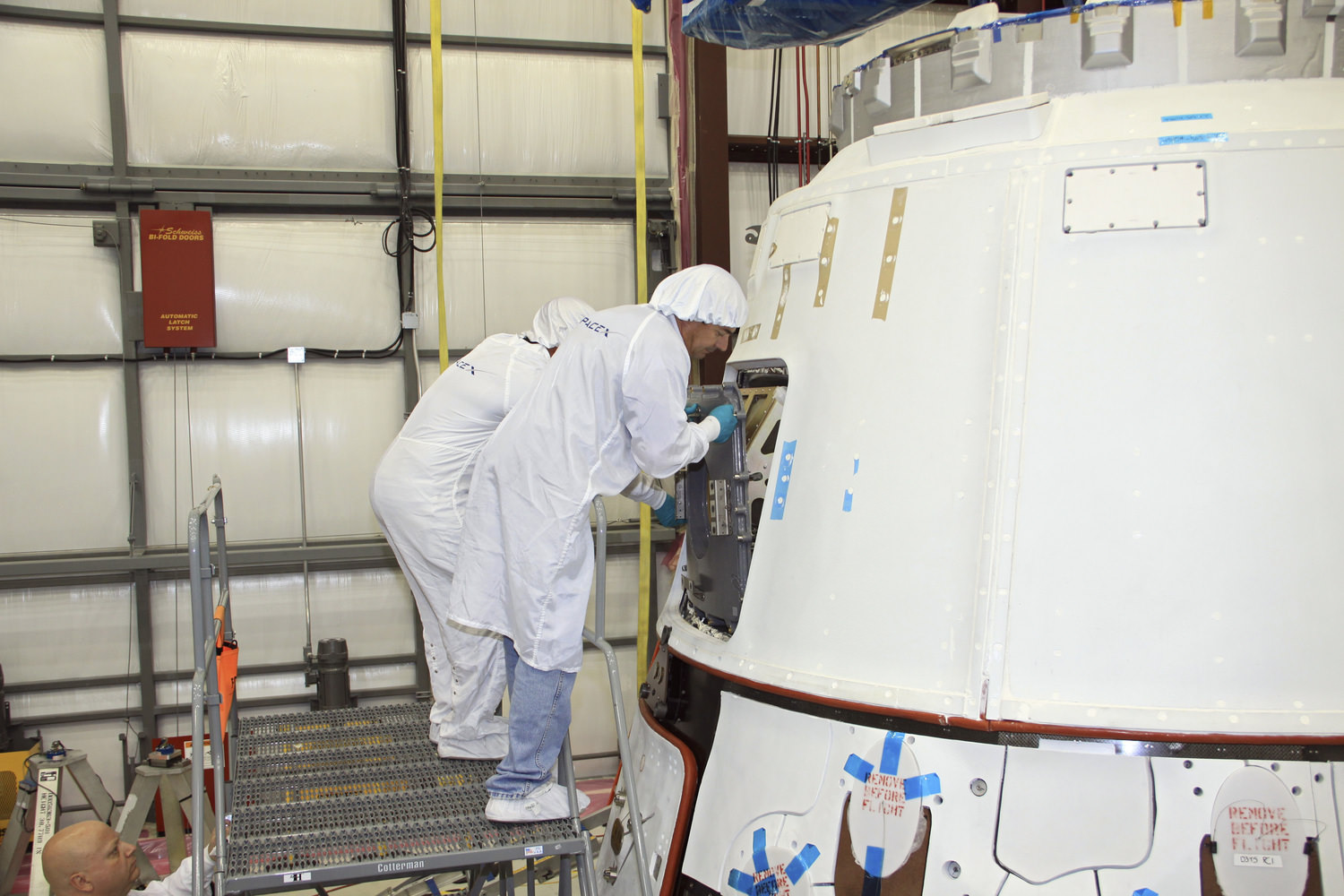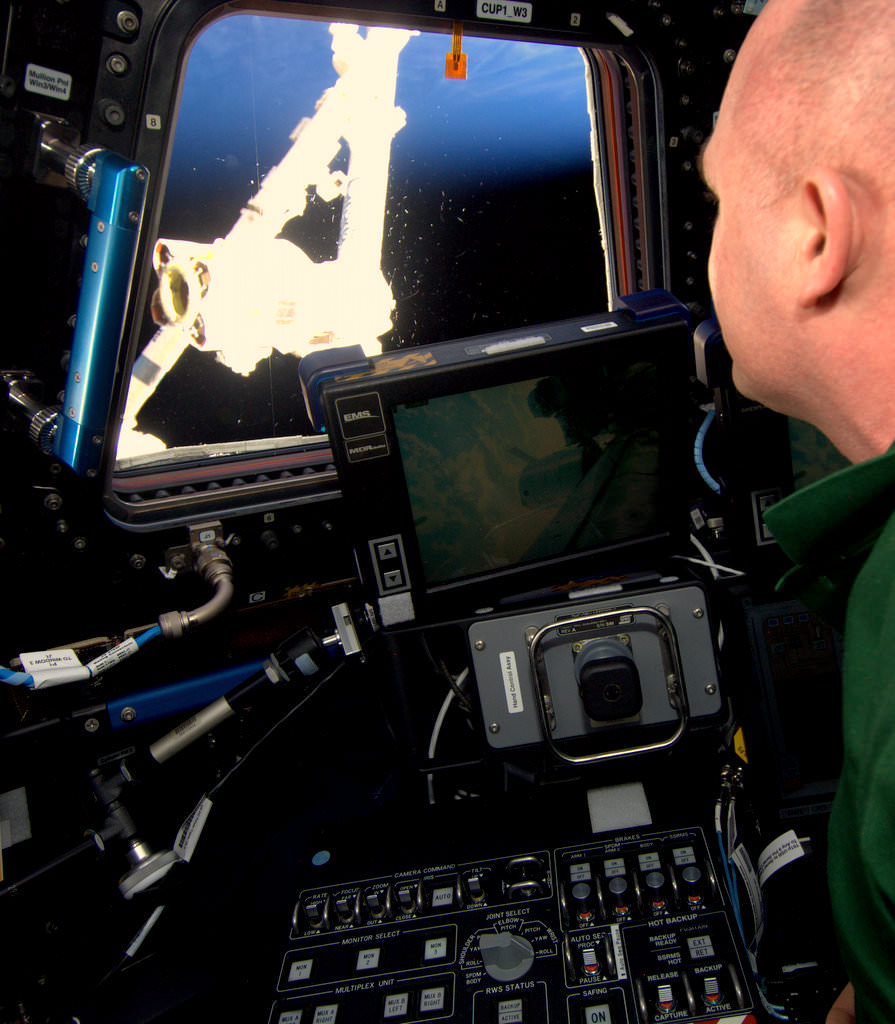SpaceX’s Falcon 9 rocket with a Dragon spacecraft is rolled out to the company’s launch pad in Cape Canaveral, Florida.
Credit: SpaceX
There will be more Dragons in space! The SpaceX Dragon’s next launch to the International Space Station has been scheduled for Sunday, October 7, 2012, NASA and SpaceX announced today. This will be the first of 12 contracted flights by SpaceX to resupply the space station and marks the second trip by a Dragon to the station, following a successful demonstration mission in May.
NASA said they have confirmed the status and readiness of the Falcon 9 rocket and its Dragon cargo spacecraft for the SpaceX CRS-1 mission, as well as the space station’s readiness to receive Dragon.
Dragon will be filled with about 450 kg (1,000 pounds) of supplies. This includes materials to support the 166 investigations planned for the station’s Expedition 33 crew, including 63 new science investigations. The Dragon will return about 330 kg (734 lbs) of scientific materials, including results from human research, biotechnology, materials and educational experiments, as well as about 230 kg (504 lbs) of space station hardware.
Materials being launched on Dragon will support experiments in plant cell biology, human biotechnology and various materials technology demonstrations, among others. One experiment, called Micro 6, will examine the effects of microgravity on the opportunistic yeast Candida albicans, which is present on all humans. Another experiment, called Resist Tubule, will evaluate how microgravity affects the growth of cell walls in a plant called Arabidopsis. About 50 percent of the energy expended by terrestrial-bound plants is dedicated to structural support to overcome gravity. Understanding how the genes that control this energy expenditure operate in microgravity could have implications for future genetically modified plants and food supply. Both Micro 6 and Resist Tubule will return with the Dragon at the end of its mission.
Expedition 33 Commander Sunita Williams of NASA and Aki Hoshide of the Japan Aerospace Exploration Agency will use the CanadArm2 to grapple the Dragon following its rendezvous with the station on Wednesday, Oct. 10. They will attach the Dragon to the Earth-facing port of the station’s Harmony module for a few weeks while crew members unload cargo and load experiment samples for return to Earth.
Dragon is scheduled to return in late October, and splash down via parachute in the Pacific Ocean off the coast of southern California.

